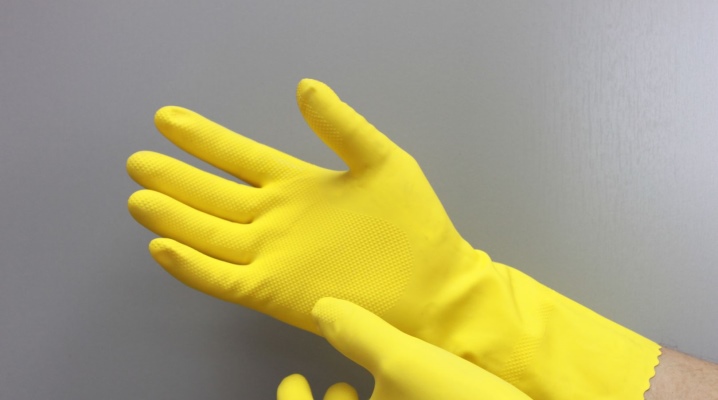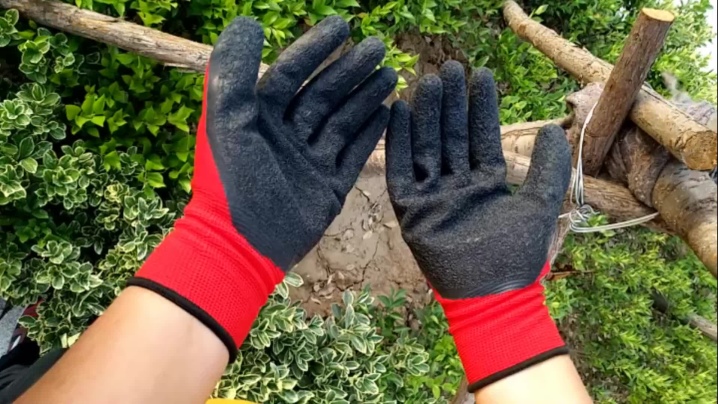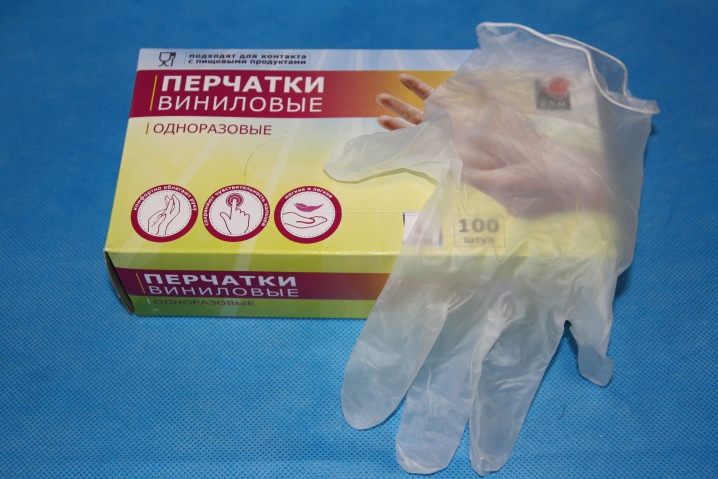Choosing rubber technical gloves

Technical gloves are primarily designed to protect the skin of the hands. A correctly selected product will allow you to comfortably and efficiently perform the necessary work.

Main characteristics
Today, rubber technical gloves are made mainly of 3 types of material - latex, vinyl and nitrile. On the farm, they are a useful accessory when working with water, mud and chemicals. The scope of application of gloves is wide - they are used both in simple household chores and during repair and painting work.
They are also used to protect hands when working at their summer cottage.

According to the service life, technical gloves are divided into 2 types:
- disposable - after work to be disposed of;
- reusable - serve for several months, depending on the frequency of use.


Protective gloves are also divided into 2 conditional groups:
- universal - used in works where hand protection from mechanical damage is needed;
- special - are intended for certain jobs, have an increased level of protection, differ in material and the principle of sewing.


There are special types of protective products such as anti-slip and fingerless. Various types are used in certain areas, however, the general requirements for all products are the same, first of all, this is protection.

What are they?
Rubber gloves are made from different materials and are distinguished by their chemical composition. But all of them do a good job with their main function.
- Latex. Products are made from natural materials. They are based on a rubber tree. Well suited for those types of work where it is necessary to maintain tactile sensitivity. The texture of the object is well felt in them due to the subtlety of the material. The downside to latex gloves is that they can cause skin allergies. Not reusable.

- Nitrile... They are made from a thicker material, they are made through the processing of petroleum products. They are used in various areas where there is an impact with chemicals, they are resistant to cuts. Reusable and very durable. The downside of nitrile gloves is that they don't stretch well. Low sensitivity of fingers when working with small parts.

- Vinyl. Gloves made of this material fit the hand tightly and take the desired shape. Easy to put on and take off, have a dense structure and do not stretch over time. Available for multiple use, do not cause allergic reactions. The disadvantages of the product are that they are designed for work with a minimum load, they are not suitable for interaction with oils and ethers.

The main criterion for choosing the material of gloves is the scope of their application. Latex products are sterile and used for working with biological materials.
Vinyl gloves are used more often in the field of beauty and cosmetology. Nitrile gloves are used by food service employees and employees of enterprises associated with the food industry.

How to choose?
Gloves, like other products, have quality standards. Product information is displayed on the label with special symbols in the form of numbers and letters. There is a marking for Russian products:
- MI - resistant to abrasion;
- MP - dense products, resistant to cuts;
- MA - protect against vibrations.
Imported products have their own markings indicating the protection class:
- A - resistant to abrasion;
- B - dense products, resistant to cuts;
- C - resistant to tearing;
- D - dense products, puncture resistant.


The size range of gloves has classic designations:
- S is the smallest size, fits a small female hand;
- M - suitable for medium sized hands and arms;
- L / XL - wide gloves, mainly used by men.
These are the basic characteristics that are sufficient for the selection of the right technical gloves.
About what kind of rubber technical gloves to use, see below.













The comment was sent successfully.